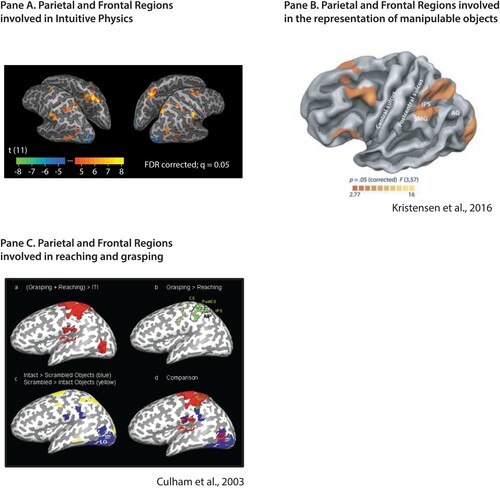Figures & data
Figure 1. A common network of brain regions supports manipulable object representation, intuitive physics inferences, and action planning. (A) Regions in parietal and frontal cortex that are engaged during intuitive physics inferences (Fischer, Citation2020; Navarro-Cebrian & Fischer, Citation2022). Those regions are more active during physical prediction than during difficulty-matched tasks requiring prediction in other domains (Fischer et al., Citation2016). (B) The network that is more active during viewing of manipulable objects compared to animals, places and faces (for the original observation, see Chao & Martin, Citation2000; data from Kristensen et al., Citation2016). (C) Regions engaged in reaching and grasping, from (Culham et al., Citation2003, see also Gallivan & Culham, Citation2015). While the task demands and stimuli used to localize the three networks are markedly different on their surface, they engage overlapping parietal and frontal areas. Of particular note, is the role of the supramarginal gyrus across intuitive physics, manipulable object representation, action planning and execution, and (not shown) phonological processing (Oberhuber et al., Citation2016)
.

